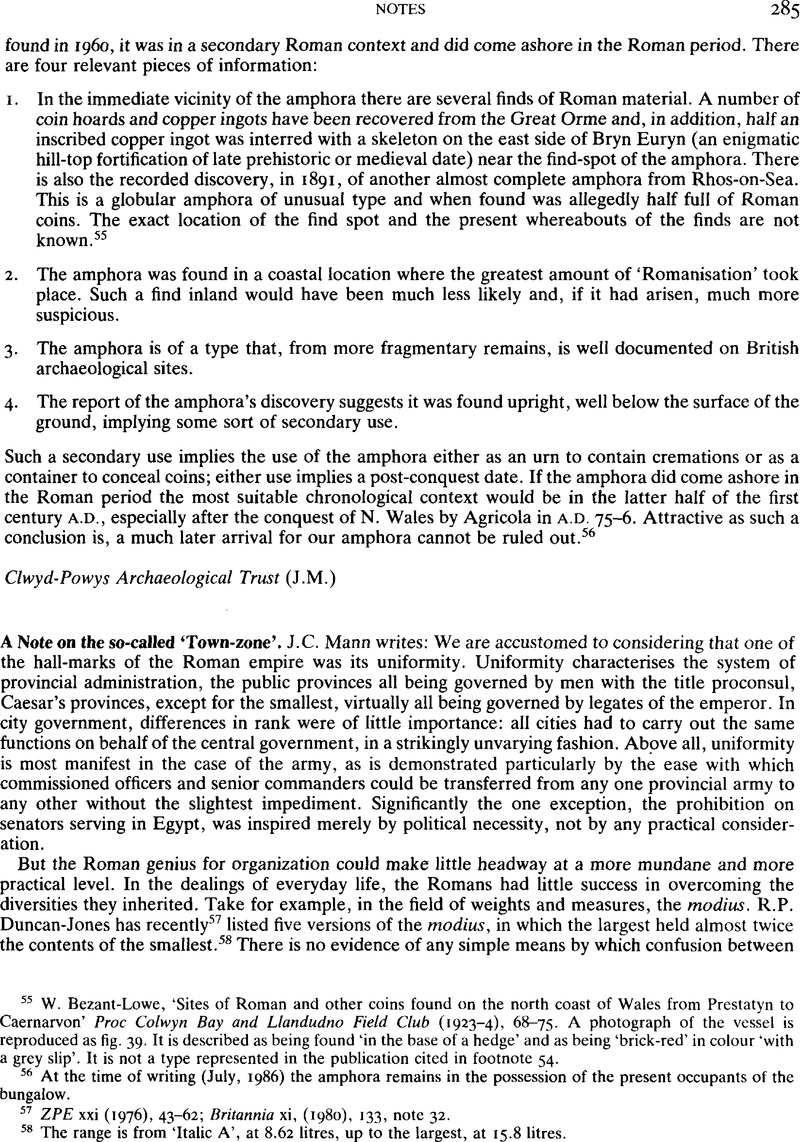No CrossRef data available.
Article contents
A Note on the so-called ‘Town-zone’
Published online by Cambridge University Press: 09 November 2011
Abstract

- Type
- Notes
- Information
- Copyright
- Copyright © J.C. Mann 1987. Exclusive Licence to Publish: The Society for the Promotion of Roman Studies
References
57 ZPE xxi (1976), 43–62; Britannia xi, (1980), 133, note 32.
58 The range is from ‘Italic A’, at 8.62 litres, up to the largest, at 15.8 litres.
59 Thus camminus for road (chemin), carrum for cart (char), caballus for horse (cheval).
60 Lat. Ver. XV, 7; leuga una habet mille quingentos passus. It is significant that the leuga can appear as a measurement of distance not only on milestones (e.g. ILS 5847) but also in the Antonine Itinerary (in the Rhineland).
61 de condicionibus agrorum 123.9 (Lachmann).
62 The average measurement for the monetai foot is about 296mm (= 11.65 ins.), with a variation of up to about 6 or 7mm: Grenier, Manuel d'archéologie gallo-romaine III. i (1958), 35. This would make the Drusian foot on average 332mm (= 13.1 ins.).
63 Walthew, C.V., Britannia ix (1978), 335–350, esp. 347.CrossRefGoogle Scholar
64 Rodwell, W., Britannia vi (1975), 76–101.CrossRefGoogle Scholar
65 e.g. ILS 6483, CIL ii, 1282b, Cf. ILS 6818.
66 Dio Chrysostom, Or. VII, 49 refers to villagers who lived so far from their city that they could not travel to it, and had become ignorant of their rights as citizens.


